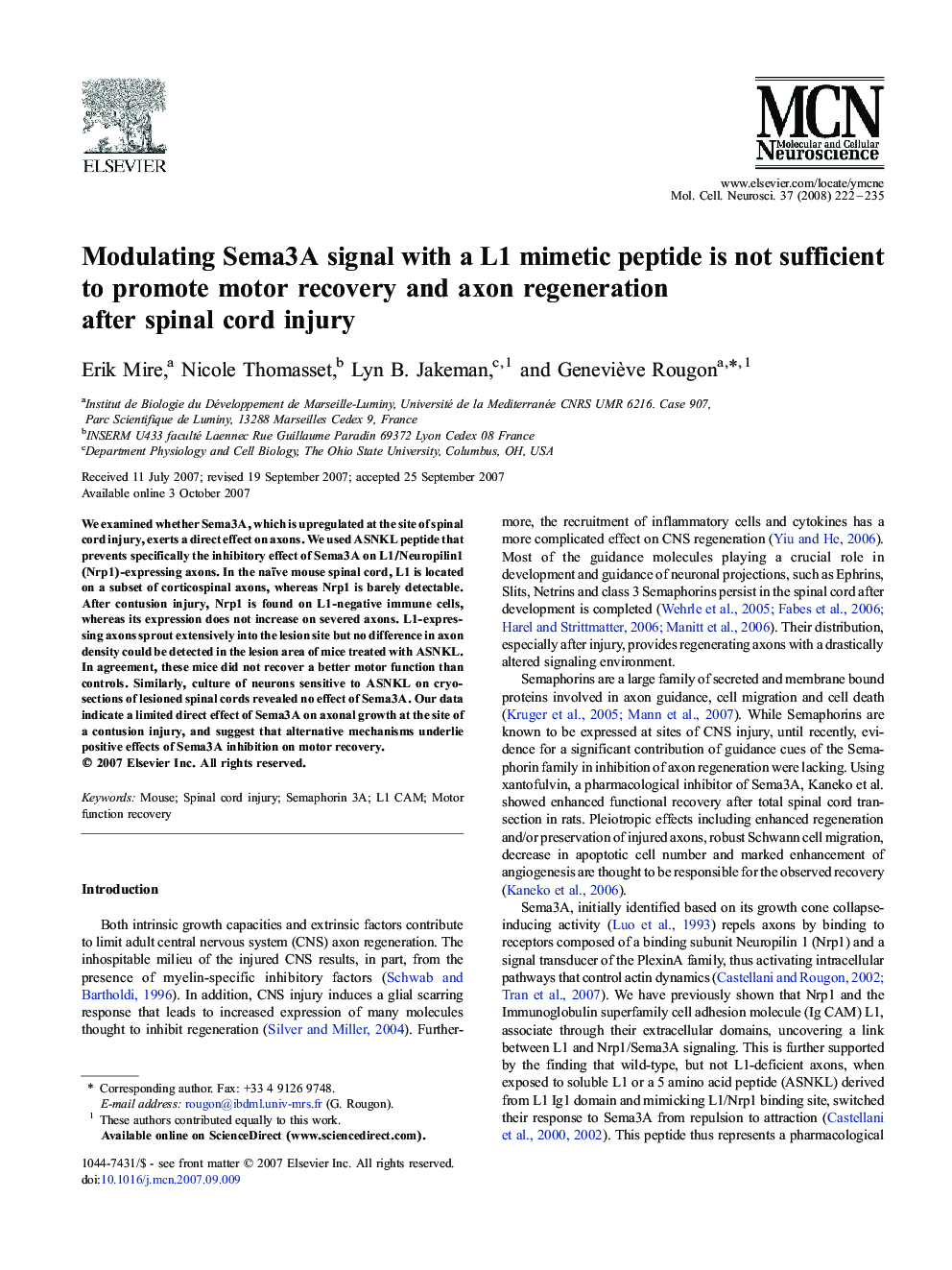| Article ID | Journal | Published Year | Pages | File Type |
|---|---|---|---|---|
| 2199177 | Molecular and Cellular Neuroscience | 2008 | 14 Pages |
We examined whether Sema3A, which is upregulated at the site of spinal cord injury, exerts a direct effect on axons. We used ASNKL peptide that prevents specifically the inhibitory effect of Sema3A on L1/Neuropilin1 (Nrp1)-expressing axons. In the naïve mouse spinal cord, L1 is located on a subset of corticospinal axons, whereas Nrp1 is barely detectable. After contusion injury, Nrp1 is found on L1-negative immune cells, whereas its expression does not increase on severed axons. L1-expressing axons sprout extensively into the lesion site but no difference in axon density could be detected in the lesion area of mice treated with ASNKL. In agreement, these mice did not recover a better motor function than controls. Similarly, culture of neurons sensitive to ASNKL on cryosections of lesioned spinal cords revealed no effect of Sema3A. Our data indicate a limited direct effect of Sema3A on axonal growth at the site of a contusion injury, and suggest that alternative mechanisms underlie positive effects of Sema3A inhibition on motor recovery.
